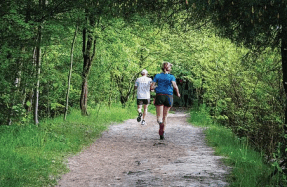Build your buffer
Jul 01, 2019
4 minutes
Trail running is essentially a repeated pattern of hip extension, compounded by changing external forces.
The hip is the link where arm-generated power is translated into the legs for propulsion. Ineffective hips make you a less efficient runner. Trail running requires range, efficiency, and control into greater degrees of flexion and rotation, without taxing the lower back, hips, thighs, or knees.
ONE WEAK LINK
A single insufficient element can cause a multitude of common running injuries that are too often ignored, given up on or medicated to death! These conditions or injuries include the more common diagnoses of muscular strains and tendinopathies, sciatica or bursitis, iliotibial band, and piriformis
You’re reading a preview, subscribe to read more.
Start your free 30 days





